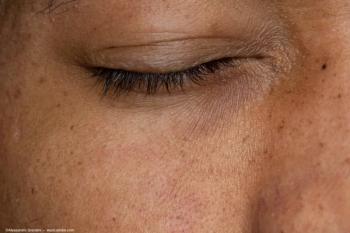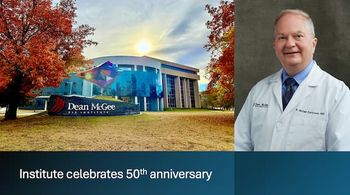
ARVO 2025: First in-human clinical trials results from magnetic cell therapy
Ellen Koo, MD, presented data from first in-human clinical trials, looking at the results from magnetic cell therapy and reports on the efficacy and safety in the patients.
Video Transcript:
Editor's note: The below transcript has been lightly edited for clarity.
Ellen Koo, MD:
Hi, my name is Dr Ellen Koo. I'm an associate professor of ophthalmology at Bascom Palmer Eye Institute. I am so happy to be here with you at ARVO 2025. We presented our work today at the poster sessions. We presented the data from our first in-human clinical trials, looking at the results from magnetic cell therapy in human patients, and we are so thrilled to present that we are seeing efficacy and safety in our patients. In addition, we're seeing improvement in best corrected visual acuity as well as improvement in central corneal thickness. Our other poster captured data from a subset of that population. We looked at 4 patients who had quality retroillumination photos, and we tracked their information from baseline, 3 months, and 6 months following cell therapy, and we were able to quantify the guttae using retroillumination photos. We were thrilled and excited to find reduction in guttae in all 4 subjects, and we saw the improvement that kept increasing over time.
So we looked at 42 patients in our first in human clinical trial. In the very beginning, we had an open-label, dose escalation therapy. In the later part of the study, we tested 3 doses, and this was, the patients were randomized in a masked, double-blinded fashion. We looked at doses, 150,000 cells, 500,000 cells, as well as 1 million cells, and we looked at the patients' outcomes over a period of 6 months following a single dose of the magnetic cell therapy. Our data from the 4 patients is actually quite exciting, because as corneal specialists, as ophthalmologists. I think we always thought guttae was a terminal event in Fuchs dystrophy, but we are seeing a non-surgical treatment that can help to modulate or even decrease guttae in Fuchs patients. Now we know that guttae is visually significant in Fuchs dystrophy, and so now we have this treatment option that can potentially reduce the guttae and help patients with Fuchs dystrophy, so that is the importance of the findings of this study.
Newsletter
Don’t miss out—get Ophthalmology Times updates on the latest clinical advancements and expert interviews, straight to your inbox.


















































.png)


